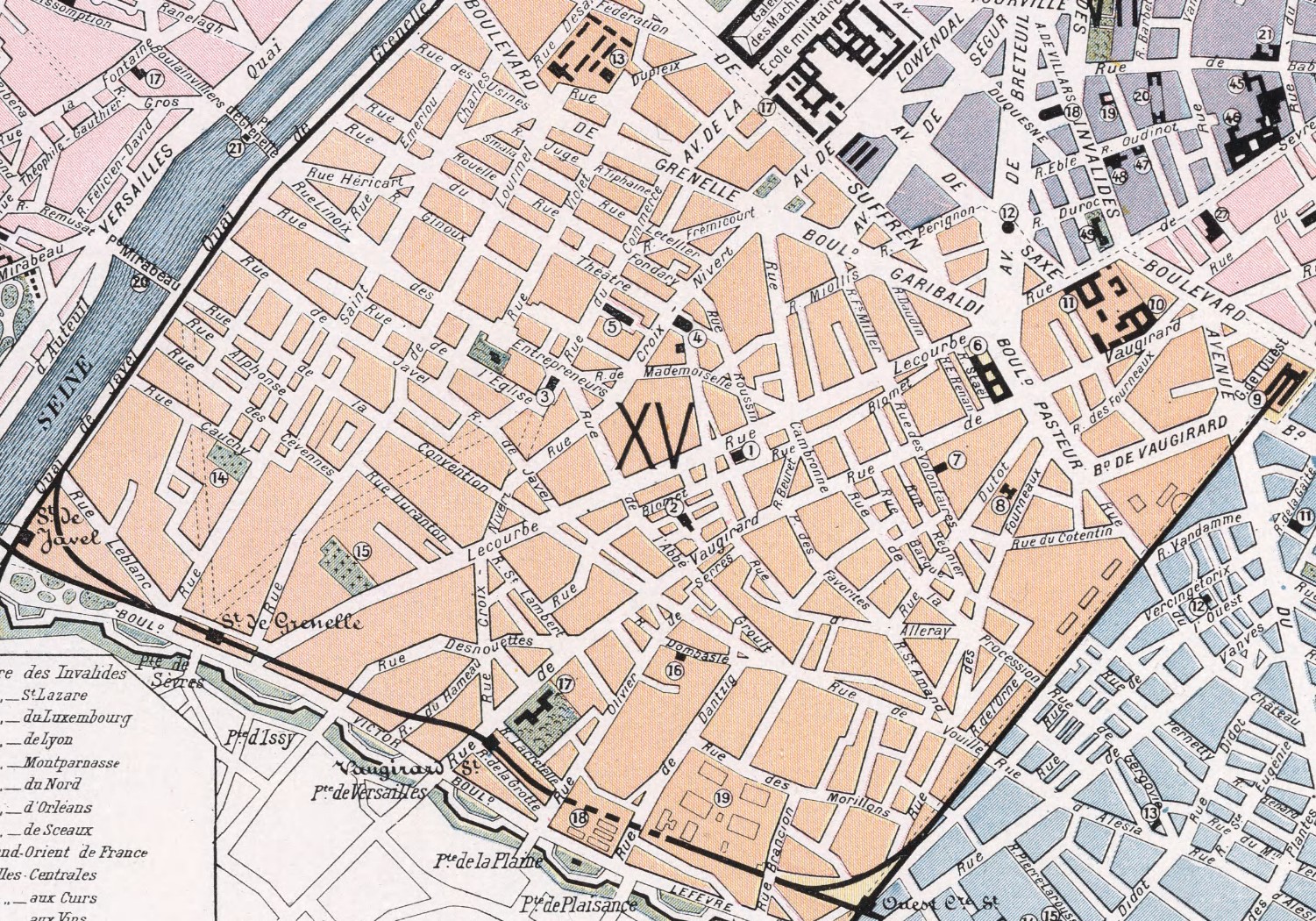15th Arrondissement
Jump to navigation
Jump to search

Introduction: This large primarily residential neighborhood ranges from very upscale in the area bordering the 7th arrondissement and the Seine, to relatively safe and affordable in the more outlying areas.
History
The loi du 16 juin 1859 decreed the annexation to Paris of the area between the old Wall of the Farmers-General and the wall of Thiers. The communes of Grenelle, Vaugirard, and Javel were incorporated into Paris in 1860.
Quarters
As in all the Parisian arrondissements, the fifteenth is made up of four administrative quarters (quartiers). The four administrative quarters of the 15th arrondissement.
- To the south, quartier Saint-Lambert occupies the former site of the village of Vaugirard, built along an ancient Roman road. The geography of the area was particularly suited to wine-making, as well as quarrying. In fact, many Parisian monuments, such as the École Militaire, were built from Vaugirard stone. The village, not yet being part of Paris, was considered by Parisians to be an agreeable suburb, pleasant for country walks or its cabarets and puppet shows. In 1860 Vaugirard was annexed to Paris, along with adjoining villages. Today, notable attractions in this area include the Parc des Expositions (an exhibition center which hosts the Foire de Paris, agricultural expositions, and car shows), and Parc Georges-Brassens, a park built on the former site of a slaughterhouse where every year wine by the name of Clos des Morillons is produced and auctioned at the civic center.
- To the east, quartier Necker was originally an uninhabited space between Paris and Vaugirard. The most well-known landmarks in the area are the Gare Montparnasse train station and the looming Tour Montparnasse office tower. The area around the train station has been renovated and now contains a number of office and apartment blocks, a park (the Jardin Atlantique, built directly over the train tracks), and a shopping center. Finally, the quartier contains a number of public buildings: the Lycée Buffon, the Necker Children's Hospital, as well as the private foundation Pasteur Institute.
- To the north, quartier Grenelle was originally a village of the same name. Grenelle plain extended from the current Hôtel des Invalides to the suburb of Issy-les-Moulineaux on the other side of the Seine, but remained mostly uninhabited in centuries past due to difficulties farming the land. At the beginning of the 19th century, an entrepreneur by the name of Violet divided off a section of the plain: this became the village of Beaugrenelle, known for its series of straight streets and blocks, which remain today. The whole area broke off from the commune of Vaugirard in 1830, becoming the commune of Grenelle, which was in turn annexed to Paris in 1860. A century later, a number of apartment and office towers were built along the Seine, the Front de Seine along with the Beaugrenelle shopping mall.
- Vin à Deux Cols
- To the west, quartier Javel lies to the south of Grenelle plain. In years past, it was the industrial area of the arrondissement: first with chemical companies (the famous Eau de Javel [bleach] was invented and produced there), then electrical companies (Thomson), and finally car manufacturers (Citroën), whose factories occupied a large part of the quartier up until the early 1970s. The industrial areas have since been rehabilitated, and the neighbourhood now contains Parc André Citroën, Georges Pompidou European Hospital, and a number of large office buildings and television studios (Sagem, Snecma, the Direction Générale de l'Aviation Civile, Canal Plus, France Télévisions, etc.). In addition, to the south of the circular highway (boulevard périphérique), an extension of the 15th, formerly an aerodrome at the beginning of the 20th century, is now a heliport, a gym and a recreation center.